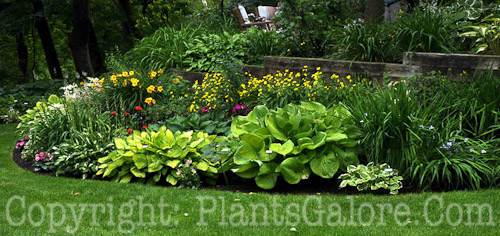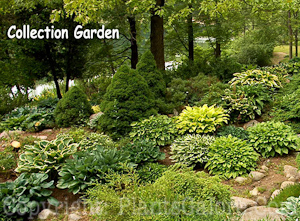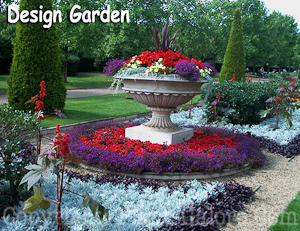In a broad sense, there are two types of gardens commonly found in home landscapes. One is called a “collection garden” which is the type grown by people who are dedicated to one genus or category of plant.
For instance, there are said to be over 60,000 named cultivars of daylilies (Hemerocallis). There are over 8,000 named cultivars of Hosta. For each of these and other species such as iris (Iris), peonies (Paeonia) or roses (Rosa) with large numbers, there are gardeners whose primary goal is to accumulate as many specimens as they can. These gardens tend to prominently display all the most recent, “cutting edge” cultivars in addition to the old classics. Often there are few, if any, other species of plants included in collection gardens.
Each plant in a collection garden is given enough room to grow to its mature size and spread so that all of its characteristics can be easily viewed. Plants are usually grouped in a systematic rather than a strictly aesthetic manner. For instance, a plant that has been used extensively in hybridizing may be surrounded by cultivars that are its “offspring”. In some cases, all the plants from a specific hybridizer or all cultivars of one particular color will be planted in rows together.
If you are interested in having a collection garden, you will need to know everything you can about your chosen plant genus. Read about its history, join the organization associated with the plant and treat it just as you would any other collection be it stamps or coins. Just like a coin collection, the idea is to display each specimen to its best advantage for your enjoyment and for the education of those who come to view your garden. To this end, it is very important to have the plants prominently labeled or to have a printed map of the beds identifying the name of each plant.
The other broad category of landscape organization is what we will call a “design garden”. Although this type of garden may feature certain species more than others, the main goal is to put together an aesthetically pleasing arrangement of many different types of plants. This garden pays attention to the rules of good landscape design such as those pertaining to color, mass, line, form and texture. Its primary purpose is to elicit a pleasant (and occasionally shocking) reaction from yourself and other people who will view your landscape.
Sometimes, to achieve these goals, certain professionals such as landscape architects or landscape designers may be consulted. They are trained in creating landscapes that maximize their impact based on the use of color, texture, form, mass and line. Or, you may want to avoid the cost or just have the urge to design your garden yourself. Either way, an understanding of design basics is essential. Our eBook, A Rookie’s Guide to Designing Beds and Borders is aimed at those who want to create a design style garden that maximizes its aesthetic beauty.


